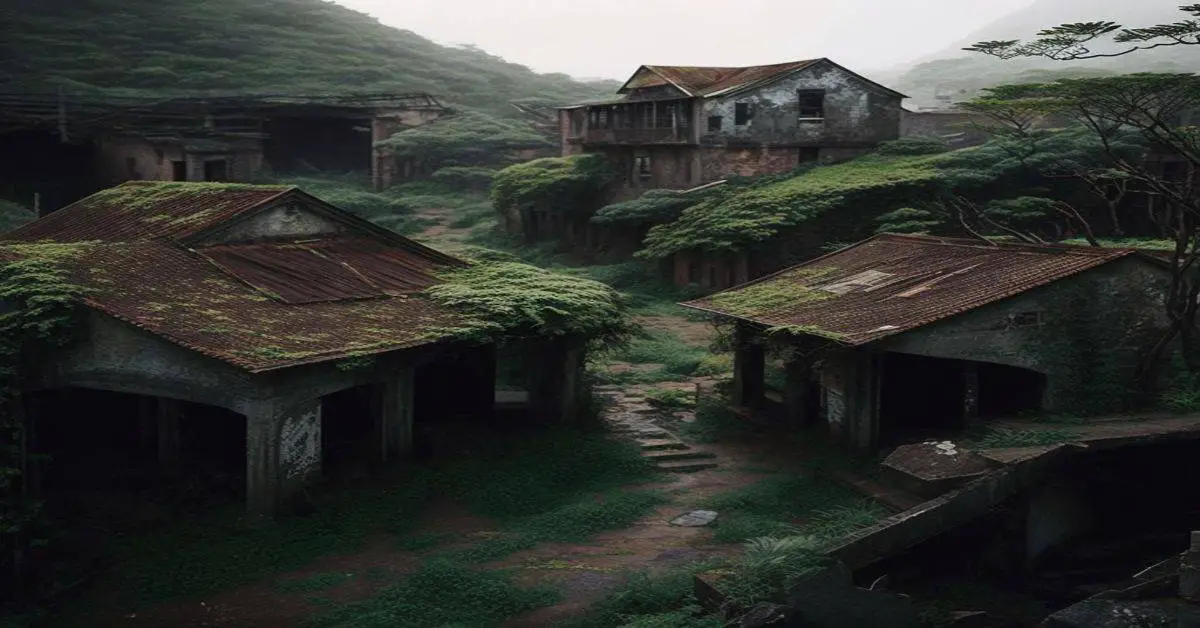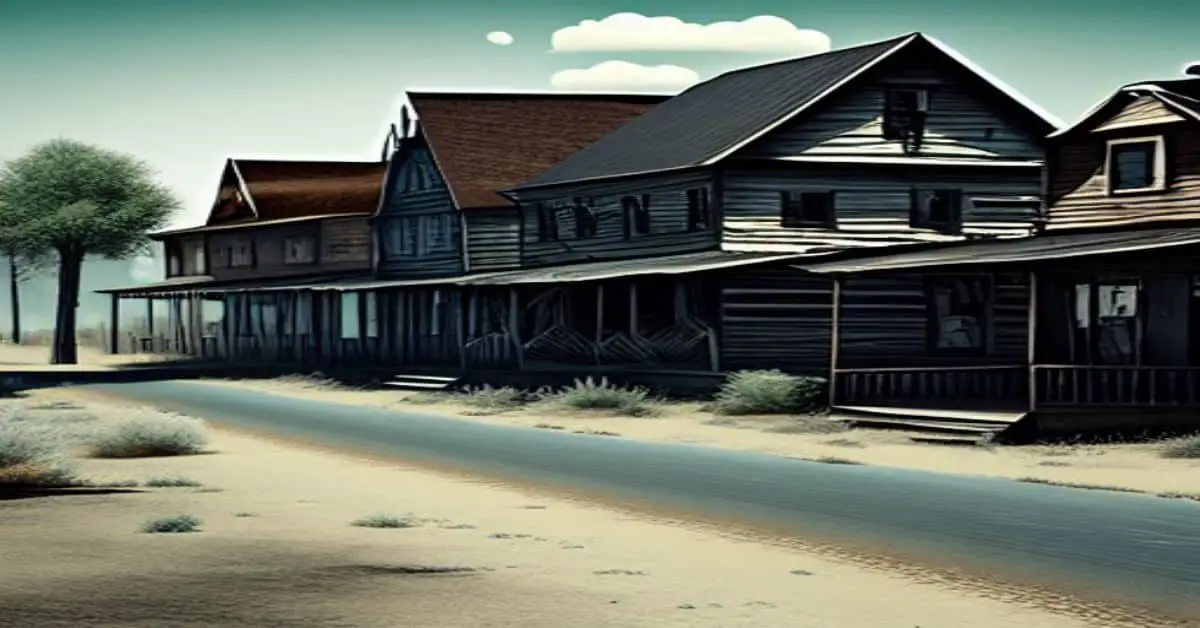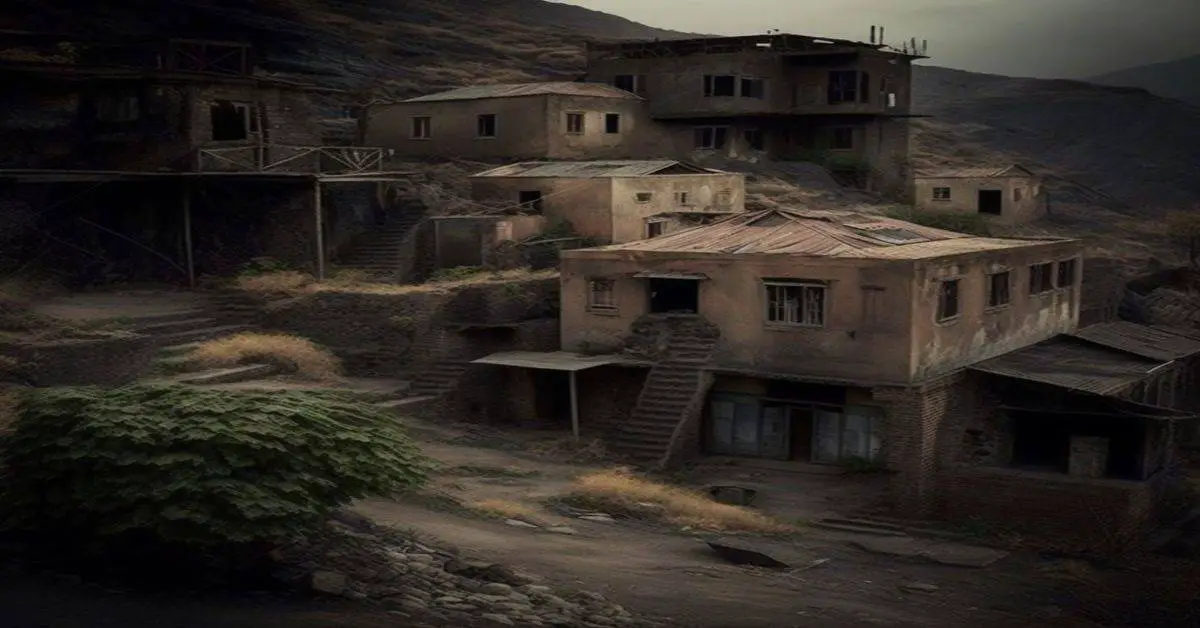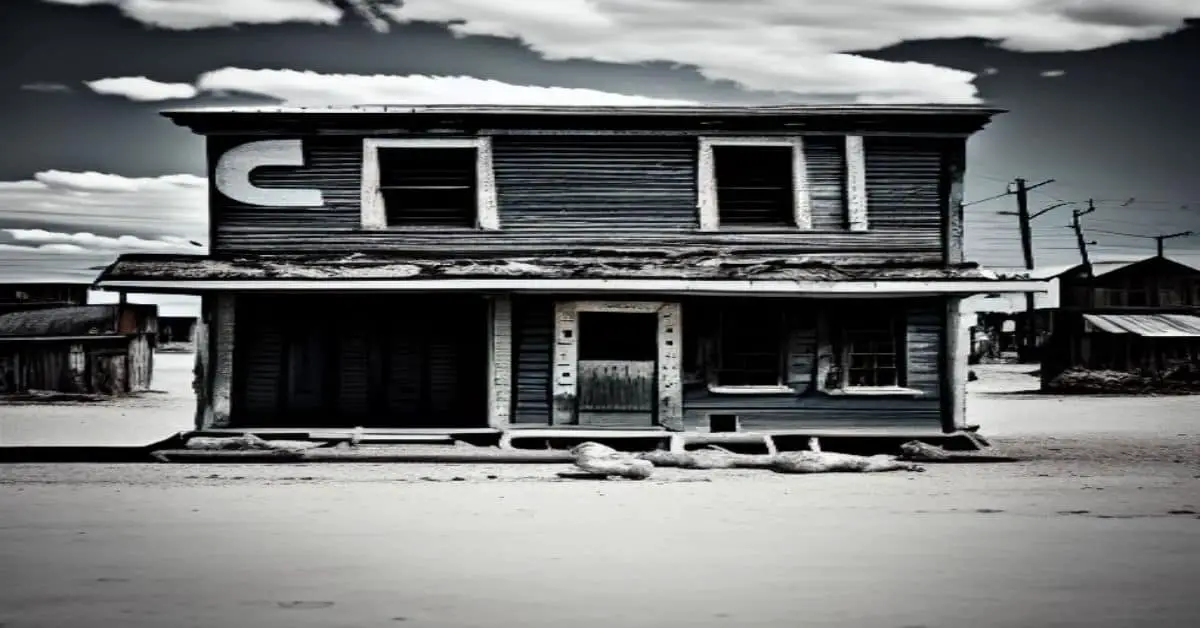Are you looking for a unique and eerie adventure in Ohio? Look no further than the state’s abandoned ghost towns! Ohio is home to numerous ghost towns, once-thriving communities that have now been abandoned and forgotten. These lost towns offer a fascinating look at Ohio’s history, showcasing the state’s pioneering spirit and the struggles of its early settlers.
What are Ghost Towns?
A ghost town is a term used to describe an abandoned village, town, or city once inhabited by many people. The term can also apply to areas once bustling with activity but have since been abandoned. Ghost towns are often found in remote or less-populated areas, and their decline is usually due to economic, environmental, or social changes that have led to their abandonment.
Ohio’s Most Intriguing Ghost Towns
Ohio is home to many fascinating ghost towns, each with a unique story. Here are some of Ohio’s most intriguing ghost towns:
Moonville, Ohio
Location: Brown Township, Vinton County – In Zaleski State Forest along the old railroad path that crosses Hope – Moonville Rd
GPS Coordinates: 39.308443, -82.324566
Moonville is Ohio’s most popular ghost town. People visit every year to see the abandoned railway tunnel still standing. The tunnel is on the old railway track east of Hope Moonville Rd. A new bridge was built in 2016 over Raccoon Creek, where the old train trestle used to be. The Moonville Rail Trail Association hopes to build more bridges to connect nearby ghost towns.
The town was named after Mr. Moon, who owned a store nearby. Samuel Coe donated land in 1856 for a train station to sell coal and clay more easily. Moonville had a school, tavern, hotel, and houses. But it never had more than 100 residents, even during its busiest time.
The town was only accessible by the railway, and there were several deaths from people being hit by trains. David “Baldy” Keeton, a local bully, is said to haunt the front of the Moonville Tunnel. He died in a bar fight and is buried in Keeton Cemetery.
Moonville was doing well until the 1890s when there was a bad smallpox outbreak, and all the mines shut down. By the 1920s, there were only a few residents left, and the last family moved out in 1947.
The town had a post office from 1857 to 1902, but the name changed several times. The town used to have old buildings and train yards, but now they’re gone. The Moonville Cemetery is up a hill from the old railway track. Many Coe family members are buried there, and some electric poles and other remnants are still along the railway path.
Boston Mills, Ohio
Location: Boston Township, Summit County – On Boston Mills Rd at the intersection of Main St
GPS Coordinates: 41.263241, -81.559419
Boston Mills is a historic town located in Ohio. It was settled by surveyors from Connecticut in 1806 and was named after Boston, Massachusetts. The town was known for its sawmills, paper mills, and its location along the Ohio & Erie Canals.
Growth and Decline
Boston Mills grew with the introduction of the Ohio & Erie Canal in 1827. It had a post office, a warehouse, stores, a hotel, a school, a blacksmith shop, a broom factory, and many businesses that dealt with boat building for the canal. After the canal was abandoned, the town also got a train station on the Valley Railroad, keeping the area thriving for many more decades.
Spooky Tales
Boston Mills is known for its haunted places, including the Boston Cemetery at the end of Main St and the “Crybaby Bride” on Boston Mills Rd that leads into town. There are also stories about a toxic dump called Krejci Dump on Hines Hill Rd, with rumors of a government cover-up.
Some urban legends claim that a giant snake from the dump roams the area and that local cults and satanists perform secretive rituals in the woods. The “End Of The World” is the name given to a spot where Stanford Rd abruptly ends and is closed off to traffic.
Historic Places
The Boston Mills Historic District was added to the National Register of Historic Places in 1992 and had a visitor center at the former store on Boston Mills Rd—the M.D. Garage, built in 1946 as a gas and auto service station, has been restored and now houses historical exhibits.
The Boston Community Church, constructed in 1911 and originally used as a school, is located at the corner of Boston Mills Rd and Hines Hill Rd. There’s also a replica train station at Riverview Rd and Boston Mills Rd intersection, used by the Cuyahoga Valley Scenic Railroad for local tourism rides.
Visitors can also see many old houses in the historic district. Some residents were forced to leave their homes due to eminent domain, as the town became part of the Cuyahoga Valley National Park. Whether you’re a history buff or a fan of spooky stories, Boston Mills is a must-visit destination in Ohio.
Egypt, Ohio
Location: Kirkwood Township, Belmont County – On Salem Ridge Rd heading east off of Co Rd 108
GPS Coordinates: 40.085233, -81.128718
Ohio is home to many abandoned towns; among them, Egypt is one of the most famous ghost towns. Let’s take a closer look at Egypt, Ohio.
Where is Egypt, Ohio?
Egypt, Ohio is located in Kirkwood Township, Belmont County. To get there, head east on Salem Ridge Road from Co Rd 108.
History of Egypt, Ohio
Egypt, Ohio had a few residents as early as the 1800s, but it wasn’t officially considered a town until the mid-1800s. Back then, it had a school, a general store, a train station on the B&O Railroad, and even a post office. Today, the most popular spots are the Salem and Old Egypt (Circle) Cemeteries on Salem Ridge Road. You can also find decaying barns, houses, a wooden bridge, and remnants of the old railroad path in the area.
Egypt Valley Wildlife Area: A Haunted Place
Egypt Valley Wildlife Area is well-known for its ghost stories. One of the most famous tales is about Louiza Catharine Fox and Thomas D. Carr. Louiza was engaged to Thomas, a veteran of the Civil War. The two of them worked for a local coal company and were introduced by the owner, Alex Hunter. However, their engagement was called off when Louiza’s parents heard rumors about Thomas’ violent side. Unfortunately, the rumors turned out to be true. One night, Thomas waited in the dark by a road that Louiza used to walk home and slit her throat with a razor blade. Louiza still haunts Salem Cemetery and can reportedly be heard crying near her grave.
Another interesting place to visit is the memorial for the site of Louiza’s murder. It has since been moved from its original location and can be found on the north side of Starkey Road (Township Hwy 546).
Old Egypt (Circle) Cemetery: A Haunted Cemetery
About a mile down the road from Salem Cemetery is the Old Egypt (Circle) Cemetery, which is said to be haunted by the ghost of a truck driver who died in a crash nearby. He lost an arm in the accident that was never found, and people claim to hear the sounds of fingernails tapping on gravestones at night. The cemetery is reportedly guarded by “devil” dogs that can be heard howling in the woods nearby at night.
Visiting Egypt, Ohio is a unique experience, but remember that the roads are low maintenance, so be prepared for a bumpy ride.
Sprucevale, Ohio
Location: Saint Clair Township, Columbiana County – On Sprucevale Rd along Little Beaver Creek about 3 miles north of Calcutta, OH
GPS coordinates: 40.706875, -80.580919
Sprucevale was once a bustling town in Ohio, located in Saint Clair Township, Columbiana County, along Sprucevale Road and Little Beaver Creek.
In 1835, the Hambleton brothers opened the town around a small grist mill they bought. The town had a lot of activity, with a saw mill, wool factory, oil mill, and a general store. The Sandy & Beaver Canal was also built through Sprucevale but was badly damaged in 1852 when the local reservoir broke. Sprucevale’s days were numbered with railroads’ arrival in nearby towns. By the end of 1870, only a few families remained in the town.
A post office opened in Sprucevale in 1871 with William Huddleston from Beaver County, Pennsylvania as the postmaster. Although Sprucevale is a ghost town today, it’s still considered a populated place for census purposes.
Haunted Sprucevale
Sprucevale is famous for its ghost stories. Canal lock #41, also known as Gretchen’s Lock, is said to be haunted by a girl named Gretchen Gill, who died of malaria in Sprucevale. The bridge over Little Beaver Creek on Sprucevale Road is said to be haunted by Esther Hale, a bride-to-be whose groom left the day before the wedding. She was later found dead in her home, still wearing her wedding dress.
Hambleton Mill and Beaver Creek State Park
Echo Dell Road in Beaver Creek State Park is home to Gaston’s Mill, which has been restored and opened to the public along with a few other old buildings. The Hambleton Mill was in extreme disrepair and restored in the 1970s and is now an impressive sight on Sprucevale Road. Ohio Historical Marker #10-15, about half a mile north of the mill, marks where gangster Charles Arthur “Pretty Boy” Floyd was killed in 1934.
These are just a few of the interesting places and stories you can find in Ohio’s ghost towns. So, if you’re looking for a unique and eerie experience, check them out!
Vinton Furnace, Ohio
Location: Elk and Madison Townships, Vinton County – On hiking trails off of Stone Quarry Rd
GPS Coordinates: 39.218200, -82.408200
Vinton Furnace was a bustling town full of ironworkers and their families. It was located in Elk and Madison Townships in Vinton County, Ohio, and can be found by hiking along Stone Quarry Road.
The town was founded by Clark Culbertson & Company and was one of many iron furnace operations in southeast Ohio. It started operations in 1854 and stopped in 1880. The furnace employed around 100 people, who were paid in company store tokens that could be used at the general stores.
Small houses were built for the workers and a school for their children. The town also had a post office open from 1854 to 1901. The post office changed its name from Vinton Furnace to Vinton Station in 1857.
The town had a train station on the Marietta & Cincinnati Railroad (later bought by the B&O) northwest of the furnace on Vinton Station Road. The train station was at the intersection of US 50. There was also another general store and a blacksmith shop at the same intersection.
The furnace, coke ovens, and engine house foundation can still be seen today. The coke ovens were made in Belgium and were only installed in a few furnaces around the world. They were built to produce coke fuel from coal for smelting iron in the furnace. Unfortunately, the coke didn’t burn well and ended up being one of the reasons the company went out of business.
Visiting Vinton Furnace is not an easy task. Stone Quarry Road is a few miles east of McArthur and south of US 50. Drive past a limestone quarry until the road forks off, then take the left fork. Follow the road and take a trail to the right that leads to an abandoned iron bridge in the woods. This trail will take you to the furnace remnants. The coke ovens are up the hill behind the furnace. Despite being close to US 50, the location feels remote and secluded.
Shaker Village, Ohio
Location: Crosby Township, Hamilton County – On Oxford Rd along Dry Fork Creek between Race Land Rd and New Haven
GPS coordinates: 39.302256, -84.749772
In 1823, 18 members of the United Society of Believers (also known as Shakers) moved to Crosby Township and established Shaker Village. Forty more members soon joined them, and they built houses to live in. In 1846, 70 Second Adventists from Cincinnati came to the village, and it grew even bigger.
The village was split into two parts, an upper and lower village, and the upper village had some amazing buildings. The most famous ones were the brick meeting house and the big dwelling. Other buildings were also like a milk house, chicken coop, sawmill, and stable. Sadly, the church and sawmill are gone now.
The lower village had a wood frame office, a carpenter shop, and a big broom shop. There were also other buildings like a sorghum mill, blacksmith shop, and school, but they are all gone now. The number of people living in the village changed significantly over the years, but the village grew to have 1,300 acres of land and 60 residents at its peak in the mid-1890s.
Eventually, the number of residents decreased, and the village was sold. The last residents left in 1916. Today, the buildings are still standing and are very impressive. There is a cemetery near the lower village buildings with burials from 1827 to 1916. You can see the site at the Shaker Trace Trail, an 8-mile paved path. Parking is available in the Miami Whitewater Forest lot. The Friends of White Water Shaker Village works to preserve the site and organize events.
Fallsville, Ohio
Location: Penn Township, Highland County – On hiking trails off of Careytown Rd
GPS Coordinates: 39.286200, -83.633054
Ohio is known for its history and abandoned towns, and there’s no better place to explore the past than at these ghost towns. Here are the top ghost towns to visit in Ohio:
Fallsville was started by John Timberlake, who built a house and a mill next to a beautiful waterfall on Clear Creek. Simon and Elizabeth Clouser bought the land and moved into the house in 1826. Simon was a farmer and ran the mill, the only big corn grinder. People came from far and wide to use the mill.
In 1830, the Auburn Methodist congregation formed, and they built their first church, a log cabin. In 1848, John Timberlake named Fallsville a town after the waterfall next to the mill. More people moved to Fallsville, and the town grew to have eight houses and a few more on the outskirts. People thought Fallsville would become a big town because of the railroad, but that never happened.
In 1891, the Auburn Methodist Church was built, replacing an older wood-frame structure. This church still stands today and is the last building in Fallsville. Andrew Payton was the last person to live in Fallsville, he died in 1893. Simon and Elizabeth Clouser are buried at the Auburn Church Cemetery on Careytown Road.
To visit Fallsville, you can visit Fallsville Lane (Township Hwy 432), a gravel road south of Auburn Church. There’s a small parking lot at the front of the road where you can park and hike. You’ll find building foundations, fences, and an old horse tank on the trail.
If you plan on visiting Fallsville, wear bright colors because hunting is common in the area, especially during turkey season. The hunters are friendly and might even give you some tips on where to look for remnants. Nature photography is also popular in the wildlife area. And if you’re feeling adventurous, you might even hear the story of the Native American girl who knocks on doors on Christmas Eve to tell people where a treasure of gold is buried nearby.
Oreton Station, Ohio
Location: Vinton Township, Vinton County – On SR 160, about 5 miles north of SR 32
GPS Coordinates: 39.164055, -82.412693
Are you a fan of exploring abandoned places? Oreton Station in Ohio is one such place that’s worth visiting! It is located in Vinton Township, Vinton County, just 5 miles north of SR 32 and 160.
What to Expect
If you’re visiting Oreton Station, park next to the only existing building. It’s the brick safe of the general store, run by David Eberts, who managed the New York Coal Co. in the 1930s and 1940s.
You’ll also find some smaller structures, remnants, and mine entrances on hiking trails accessible from the parking area. As you head west from the parking spot, you’ll come across a 17-train car-length passing siding used for loading and unloading along the former railway tracks.
Oreton’s History
Oreton Station had its boom days after the construction of the Eagle Furnace in 1852. The town’s residents mined iron for the furnace, coal, shale, and small amounts of silver. Today, what remains of the toppled-over furnace can be found next to a gravel access road on the opposite side of SR 160 from the brick safe.
At its peak, Oreton had 800-900 residents and commuting workers. There were 50-70 houses, a one-room schoolhouse, and a church. But, the town never had a cemetery since most people lived there only for work and were buried in other nearby towns or on their family farms.
After losing its post office, which was in operation from 1880-1950, the town was completely abandoned. Alice L. Eberts, the last postmaster, was laid to rest with relatives in Elk (McArthur) Cemetery.
Was Oreton Called Aleshire?
According to postal records, before 1880, the town was originally called Aleshire. But there wasn’t much information available before it was called Oreton. It seems to be a ghost town within a ghost town.
The Aleshires were a large family in early Ohio, mostly living in Meigs and Gallia Counties in the first half of the 1800s, and many early Ohio towns were named after family last names. Several Aleshire graves are in Mound Hill Cemetery in Gallipolis, OH, about 35 miles south of Oreton.
The closest evidence of linking the town of Aleshire to the family surname is a record of Alonzo Aleshire, who was born in Vinton County in 1857. An Essie Alshire (1896-1918), with a misspelled name or a changed name, is buried in Hamden Cemetery, 7 miles west of Oreton. We suspect an Aleshire family cemetery may be somewhere near Oreton, but it could have been lost over time or destroyed by the mining industry.
Little Egypt, Ohio
Location: Bedford Township (defunct), Cuyahoga County – On Durham Rd at the intersection of Tinkers Creek Rd
GPS coordinates: 41.374042, -81.579774
Ohio is home to some pretty interesting places, including ghost towns! Here are the top ghost towns in Ohio, starting with Little Egypt.
Little Egypt got its name from a strange mound on the Gleeson homestead that looked like a pyramid. The Connecticut Land Company bought the land in 1795. A few years later, Elijah Nobles became the first settler. He was given the right to live on the land as long as he made improvements. But he didn’t like living alone, so he moved to Bedford in 1814.
The next settlers were the Comstock family from Connecticut. Stephen Comstock was the head of the family and had several children. They were successful in farming, hunting, and fishing and became the first permanent settlers of Bedford Township.
More settlers came from New England, and a saw and grist mill was built on Tinkers Creek. The Gleeson family from New York arrived in 1818 and became the second most important family in Little Egypt. They bought the mill and used the profits to build a tavern and inn on the Cleveland – Pittsburgh Stagecoach Rd. The tavern was called the “World’s End Tavern.”
The Gleesons also built a brick house, a steam-powered sawmill, and a distillery. Little Egypt had a one-room schoolhouse, a general store, a blacksmith shop, and a tavern called Ma Parker’s Tavern. A new school was built in 1880, and a sandstone quarry was built in the late 1880s. Little Egypt was never officially a town but grew significantly in a small area.
The Gleeson family changed their surname to Gleason in the mid to late 1800s. One of their descendants was Clara (Gleason) Carey, a famous artist. Today, Little Egypt is a ghost town, but you can still see the ruins of the old buildings and learn about its history.
Conclusion
Ohio’s ghost towns are a fascinating glimpse into the state’s past, showcasing the struggles and triumphs of its early settlers. Whether you’re a history buff or a lover of the paranormal, Ohio’s ghost towns are sure to intrigue and captivate you. So pack your bags and head out to explore these abandoned relics of the past!



